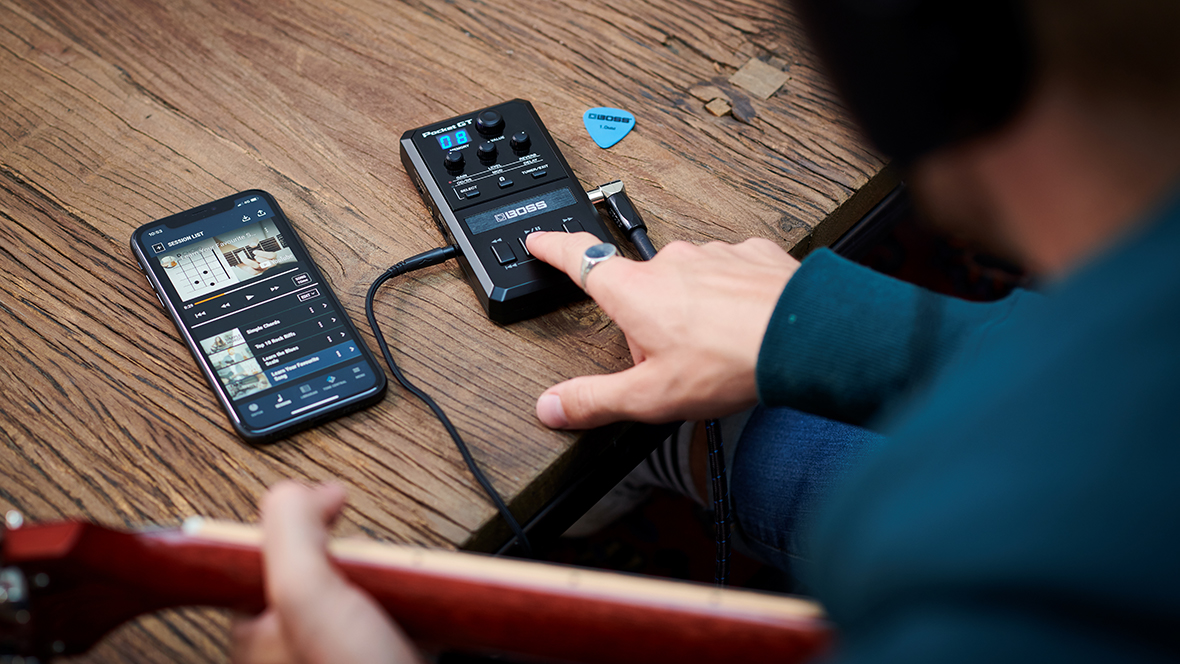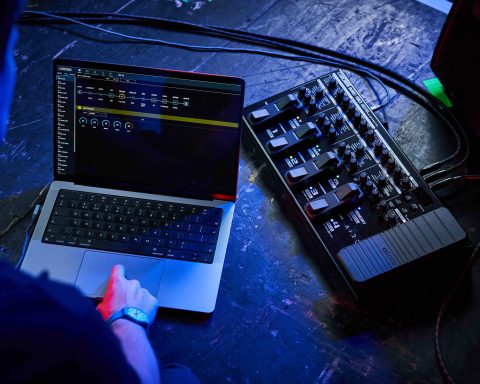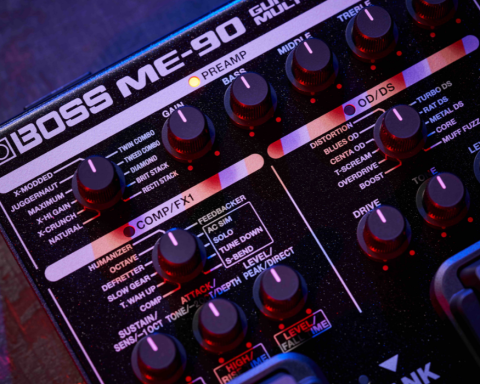As guitarists, the way we practice is changing. In the past, we sat in front of books, music playing from one device and guitar coming from another, trying to balance each element. YouTube and streaming have unlocked a whole new level of accessibility to any genre or style we can imagine. They place the entire world of guitar on our screens. Learning and rehearsing are much more interactive experiences as a result. Enter the Pocket GT to take guitar practice sessions to the next level.
Learning Guitar Today
The Pocket GT is a practice tool to match modern needs. It arrives equipped with over 100 GT-series amp and effect models. Plus it includes Bluetooth, integrated YouTube streaming via the BOSS Tone Studio editor, and a USB interface. All this means the smartphone-sized pocket practice tool is right there for practicing, jamming, or recording. Let’s look at how to get started using some of the Pocket GT’s most powerful functions.
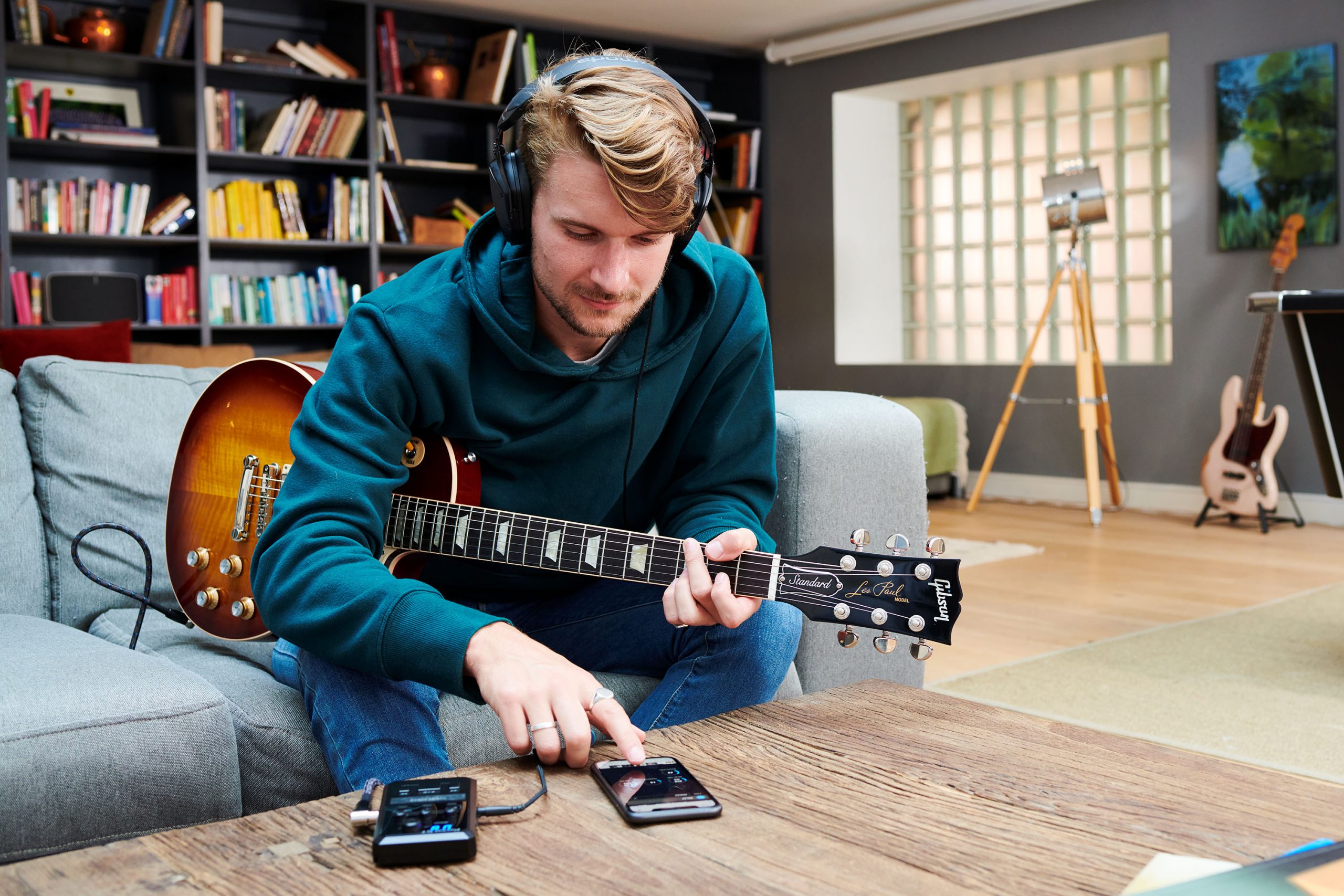
Get Familiar
The Pocket GT does a lot. For that reason, it’s helpful to get to know some of the unit’s basic features and functions in standalone mode. Start playing straight out of the box by connecting the guitar to the input. Then connect headphones to the output socket, and turn up the volume control on the side. Scroll through the 99 factory presets with the main Value control. The three smaller knobs and a select button allow players to edit amp settings, drive, modulation, and delay effects. Try out some sounds and start tweaking.
"The Pocket GT does a lot, so it's helpful to get to know some of the unit's basic functions in standalone mode."
Get Smart
When you’re ready, download the BOSS Tone Studio for Pocket GT for your iOS or Android device. It requires users to pair the device to the Pocket GT before opening the app. This functions exactly like pairing any other Bluetooth device to a phone. Open the device’s Bluetooth settings and then hold down the Bluetooth pairing button on the Pocket GT. When POCKET GT AUDIO appears on your device, choose this rather than POCKET GT MIDI. Once they’re connected, load the app, go through the setup screen, and start playing.
Studio Time
The BOSS Tone Studio for the Pocket GT app allows players to get under the hood of the Pocket GT. It’s divided into these four main sections:
- Editor (for creating and changing tones)
- Session (for streaming and arranging YouTube content)
- Librarian (for organizing presets and backing tracks)
- Tone Central (provides access to hundreds of extra tones)
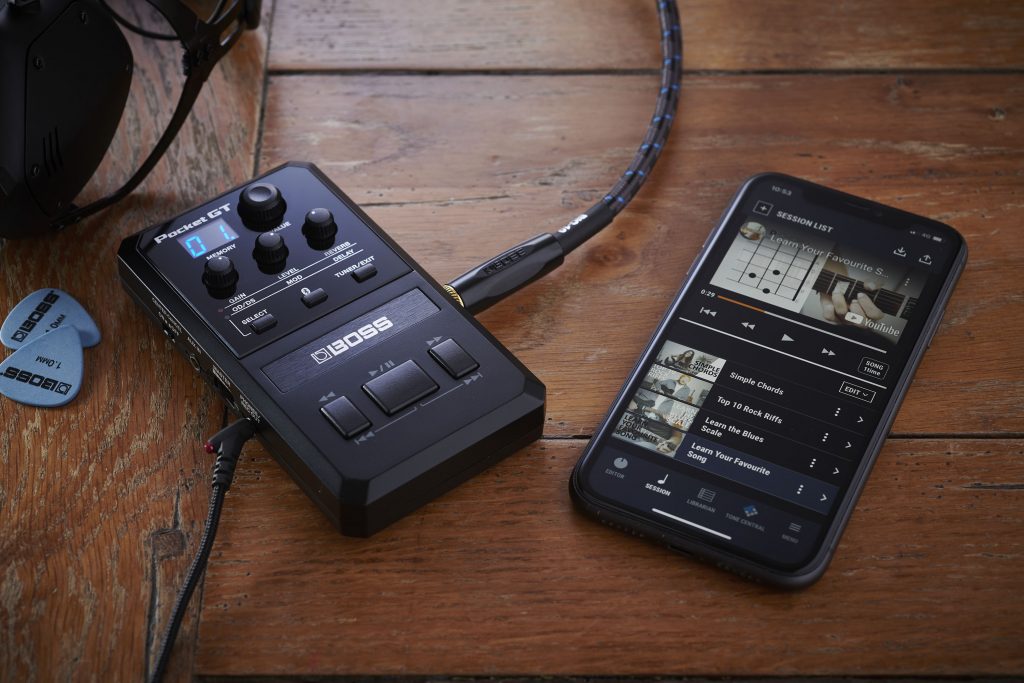
Editing Sounds
From the edit screen, one can see the preset number/name currently selected. Below this is the signal chain, laid out into blocks for each part of the virtual rig. Switch effects on or off by tapping them. They turn grey when switched off. To change individual settings on an amp or pedal, press and hold. This leads to the settings screen for that effect. Here, we can change the category, model, and parameters for a selected effect. Once this is complete, use the back arrow to return to the main Editor screen to edit the placement of effects in the chain. Finally, write the preset to the Pocket GT’s memory.
"Want to jump from a clean to an overdriven tone, then to a boosted lead for a solo? It's possible without taking hands off the guitar."
In Session
One of the most exciting features of the Pocket GT and Tone Studio app is the Session screen. Here users can compile a playlist of YouTube lessons and backing tracks. It’s as simple as pasting the video’s URL into the Session List. Change the name and order of videos as well as how each video plays back. The audio from the video plays in tandem with the guitar signal in headphones.
That’s not all, however. One of the key features of the Session screen is Markers. By setting marker points anywhere in the video, set up loop points for cycling around phrases. One can also pre-program marker points in a video to change the Pocket GT’s tone. Want to jump from a clean tone to an overdriven sound between a verse and a chorus, then to a boosted lead for a solo? It’s possible without ever taking hands off the guitar.
"Center Cancel reduces the volume of the center channel, allowing players to sit in with their guitars instead."
Tone Home
The Pocket GT comes with 99 presets, all set up and ready to go straight out of the box. Still, let’s face it, what guitarist doesn’t want more sounds? The BOSS Tone Central portal has it covered. Access Tone Central in the ToneStudio app and find three packs of presets featuring tracks in a range of styles.
Front and Center
There are thousands of guitar backing tracks to jam along with on YouTube. However, what about a backing track without the solo? The Pocket GT has an additional feature up its sleeve: Center Cancel. This switch on the side of the unit processes the audio from video playback or audio signals connected to the Aux In via a cable. This reduces the volume of the center channel considerably. It will remove, or dramatically decrease, elements of the mix panned to the center. This allows players to sit in with their guitars instead. It’s easy to use: flick the switch to the on position and start playing.
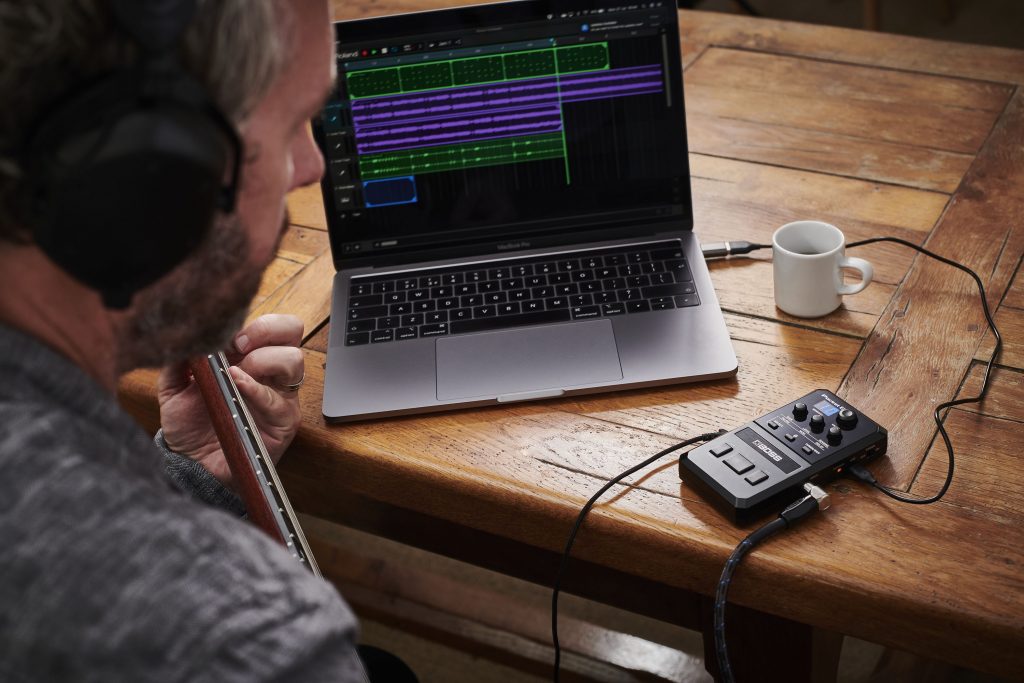
"Players can record the dry sound of a guitar, or send the Pocket GT’s onboard amp and effects straight into a computer."
On the Record
The Pocket GT comes packed with features for practicing and jamming. In addition, it functions as a high-quality, low-latency audio interface for DAW recording. Players can record a dry, unprocessed guitar sound or send the Pocket GT’s onboard amp and effects straight into a computer. That audio goes back to the Pocket GT and the user’s headphones, along with any tracks already recorded. It’s the perfect way to get started, particularly for players who desire a portable interface for on-the-go recording.

